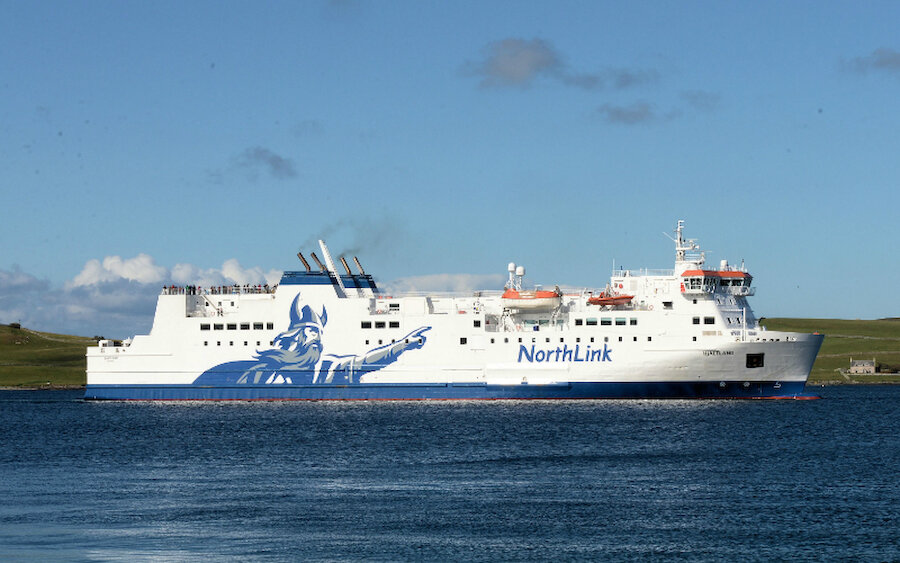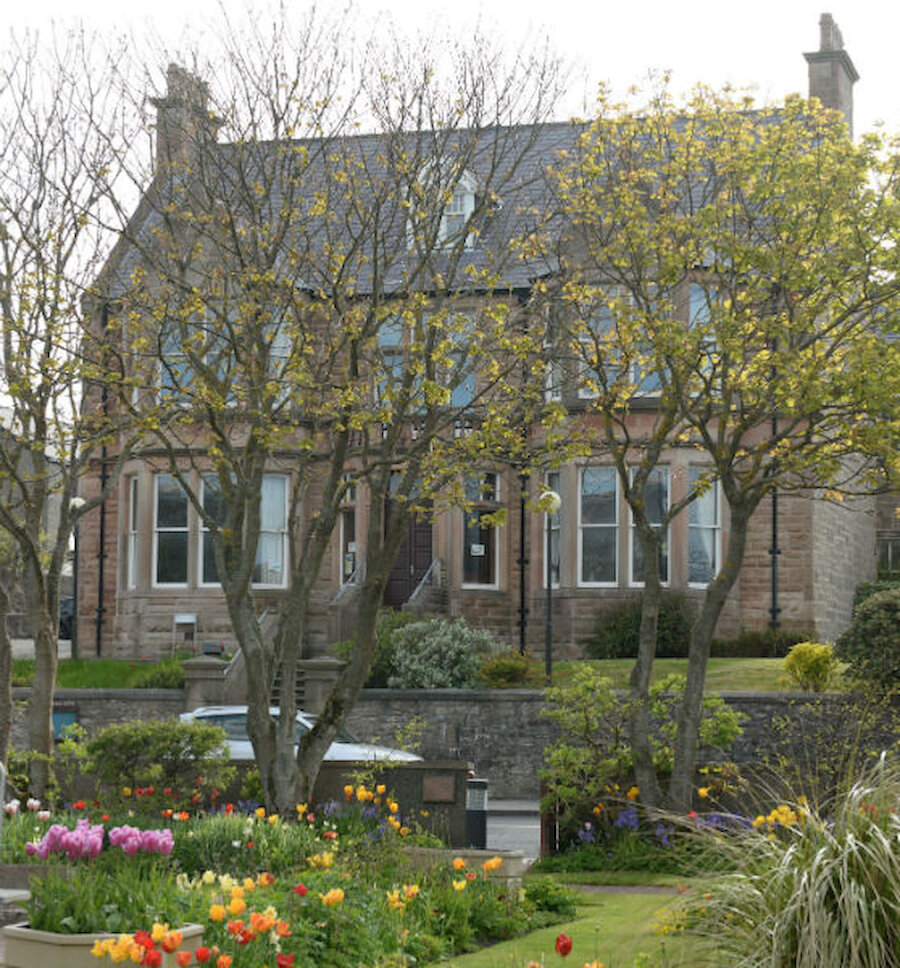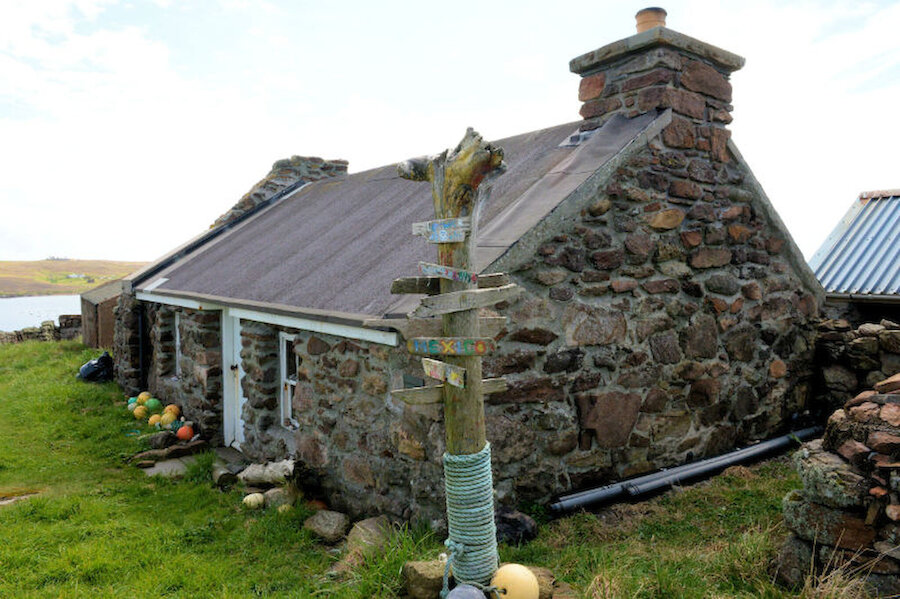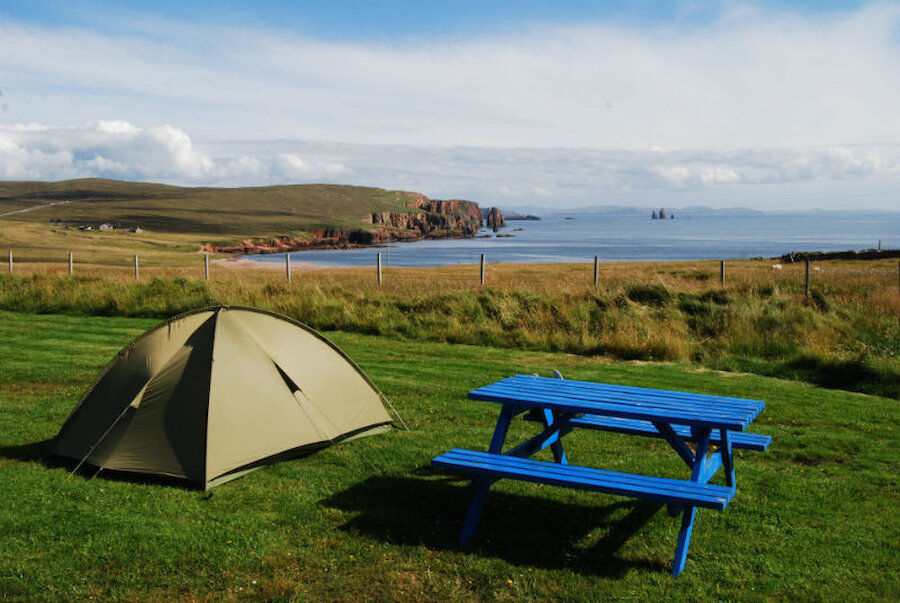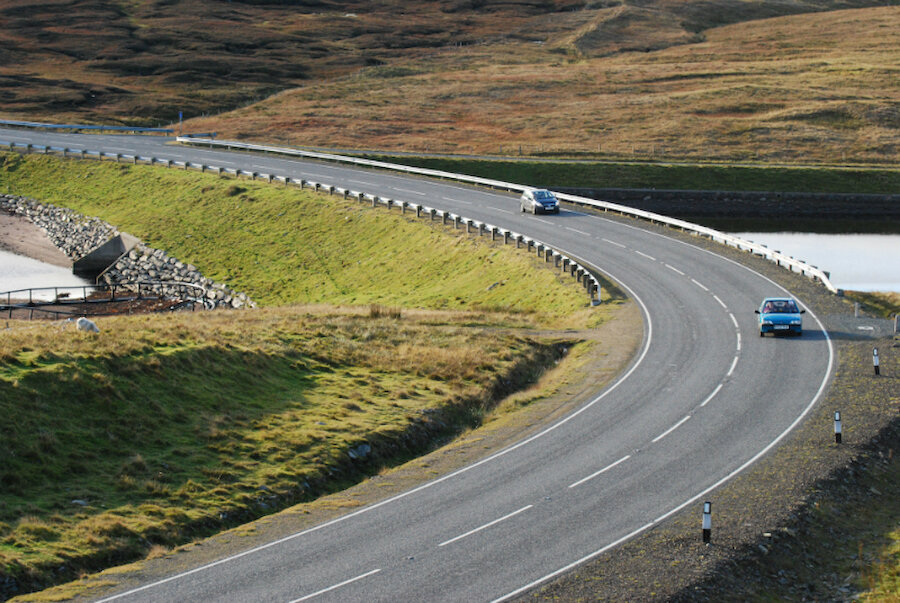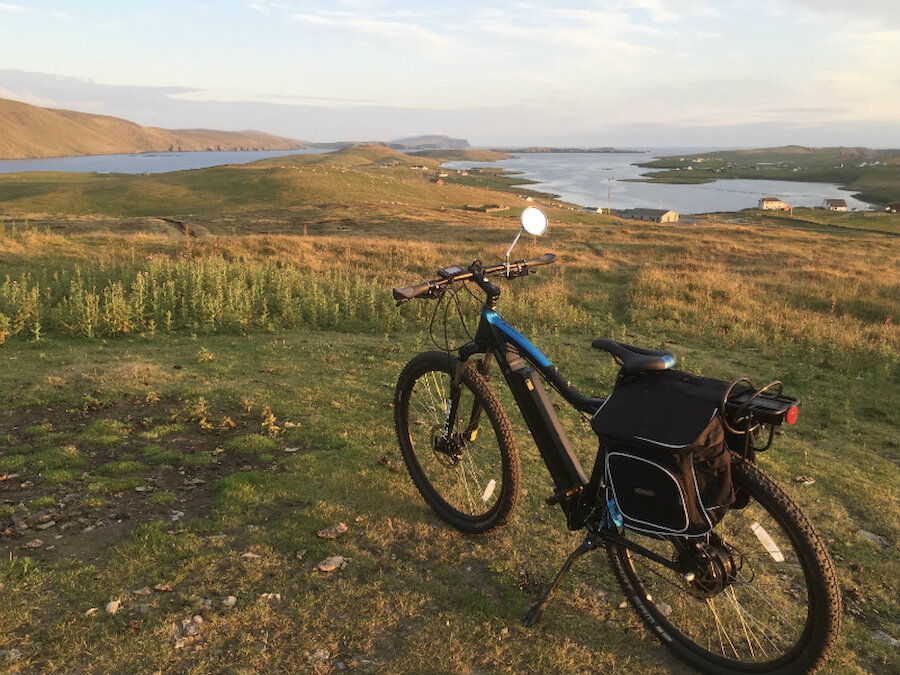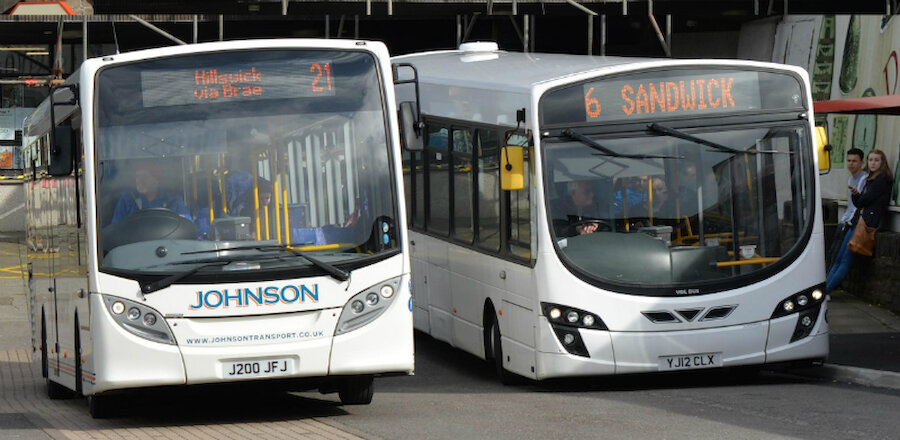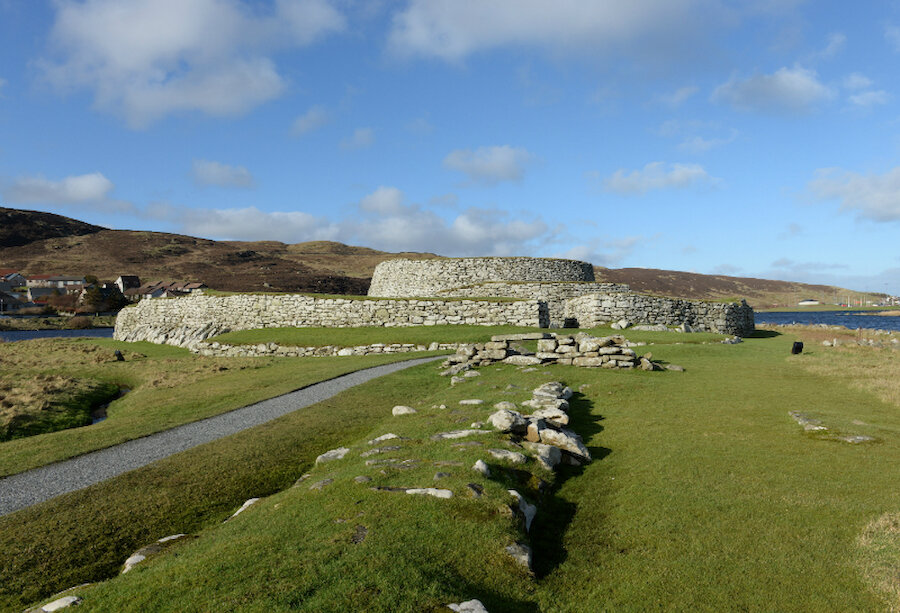The first decision is about how to get here; you can reach Shetland by ferry or plane. Although there are occasionally flight bargains to be had, the cheaper option for budget travellers will almost certainly be the overnight ferry service from Aberdeen.
A visit to Shetland is high on many people’s wish lists. Maybe you love the idea of visiting these spectacular islands, but you need to keep to a tight budget. If so, please read on, because there are lots of lower-cost ways to enjoy the islands.
By ferry
Two identical ships, operated by NorthLink Ferries, ply the route every night. These are comfortable, modern vessels with good facilities aboard. The voyage takes between 12 and 14 hours, depending on whether there’s a call at Kirkwall in Orkney. The crossing can be rough in the winter months, but between May and September there’s usually very little motion.
On the ferry, the basic return fare in peak season (for example, August) is £72. That doesn’t include any form of accommodation but it’s possible to sleep on the seats or indeed on the carpeted floor in the forward lounge; an inflatable pillow will help. In fact, if you want to lie flat, those are the only options unless you’re in a cabin. There are also upholstered benches in the cafeteria, but it’s at the rear of the ship, above the engines, where there’s noticeable noise and vibration.
You can, however, add a reclining seat, which costs £3.50 each way or £7 return. For £18 each way, you can book a sleeping pod, which is a more sophisticated recliner in a separate, quiet lounge area, equipped with a charging socket for your phone. A shower and a toilet are available.
The most comfortable option is a cabin, and these are sold in the same way as hotel rooms ashore. You get your own ensuite shower and lavatory; all cabins have TVs and everything you need to make a cup of tea or coffee. In peak season, a two-berth cabin costs £124 each way and a four-berth costs £121 each way, but if you book with a friend in a two-berth, that’s £62 each (single) or £124 (return). Sharing a four-berth with three friends brings the cost down to £60.50 per person return. (In ‘normal’ times – before the pandemic – it was possible to buy a bed in a single-sex four-berth cabin, or indeed a two-berth, outside cabin, sharing with someone you didn’t know, but that option is not currently available.)
You do, of course, have to pay the passage fare on top of these cabin fees, so the total bill may be similar to the cost of an air ticket. One advantage of ferry travel is that there is no charge for changing your travel dates. Nor is there any cost saving in booking early; however, if you leave it late, you might not get the accommodation on board that you want, especially in the very busy peak season.
We’ve more to say about getting around Shetland below but, if you want to take your own transport, you can book a space on the ferry. A peak season return for a vehicle under 6 metres costs £254.
Since the Aberdeen-Lerwick ferry calls in Orkney on three or four evenings each week, you can include both island groups in one trip. Orkney and Shetland really are surprisingly different, but each has a great deal to offer.
You can travel through Orkney in both directions, but it may be more convenient to travel north from Aberdeen to Shetland and then back southwards to Orkney, from where one option is to head directly back to Aberdeen. You don’t need any accommodation on the legs from Aberdeen to Orkney or Shetland to Orkney, as these are fast, evening sailings that reach Kirkwall at 11pm.
However, you don’t have to travel via Aberdeen, in either direction. There are connections between Orkney and the northern Scottish mainland ports at Scrabster, Gill’s Bay or (for foot passengers) John O’ Groats. If you have plenty of time at your disposal, you could combine Orkney and Shetland with an exploration of the northern Highlands.
By air
If you choose to fly, you can check prices on the Loganair website. It's difficult to give an accurate idea of air fares, because on Loganair – as with other airlines – there are limited numbers of seats at each price point and those who book early obtain the cheapest seats. There are also seat ‘sales’ from time to time.
What’s more, there are three classes of ticket; the higher the price, the more flexibility in terms of changing flights. In peak season, booking three or four months ahead, you might expect to pay around £180 for a basic return from Aberdeen to Shetland. That does include a reasonable luggage allowance, a biscuit and tea, coffee or juice. The flight takes an hour from Aberdeen.
You can also fly direct to Shetland from Inverness (1 hour 45 minutes, with a short stop in Kirkwall); Edinburgh or Glasgow (1 hour 30 minutes); or Kirkwall (30 minutes). There is also a direct service on Mondays and Thursdays from and to London City, with a brief stop to pick up or set down passengers at Dundee. A summer service operates between Shetland and Bergen, Norway, on Tuesdays and Saturdays, taking 1 hour.
You can connect with flights from much farther afield. If you do that, though, it’s best to ensure that the airline has a code-sharing arrangement with Loganair, so that you should be properly looked after if there is any disruption due to weather or other problems. For example, you can use the British Airways website to book all the way to Sumburgh, Shetland from anywhere on the world-wide network served by British Airways. Flights to the UK booked in that way may be on any airline within the OneWorld Alliance, so your flight might be with BA or its partners such as Aer Lingus or American Airlines.
It’s perhaps not a prime consideration, but it can be helpful to use Aberdeen as your point of departure from the UK mainland. Although flights to and from Shetland aren’t often affected by weather, it does sometimes happen; in summer, sea fog can close Sumburgh Airport. Should that happen, and you’re in Aberdeen, Loganair may be able to transfer you to the overnight ferry.
But what about getting to Aberdeen? One option is to take the bus. For instance, you can get to Aberdeen direct from Edinburgh in around three hours by Megabus; one-way fares start from a little over £9.
If you book early, the cheapest single rail tickets from ScotRail start at around the same price, but these are in short supply. An off-peak return by train from Glasgow to Aberdeen is likely to cost around £65.
Somewhere to stay
What about budget accommodation? Well, there are three main options, and one or two more unusual choices, and you may well want to use them in combination.
First, there are two youth hostels. The one in Islesburgh House (shown above) in Lerwick is affiliated to the SYHA and, a few years back, it won the accolade of Best Hostel in the World; so you should have an enjoyable stay! The beautiful old building offers various sizes of room, including twins. The other youth hostel is the independent Gardiesfauld at Uyeasound in Unst, and it, too, is comfortable and well-equipped.
Secondly, we have a network of Camping Böds, interesting historic buildings that have been sensitively converted to offer low-cost visitor accommodation offering between 4 and 16 sleeping spaces.
They provide a convenient and economical base in several parts of the Shetland mainland. The facilities in Böds vary a little, but all of them have a dry place to sleep, a solid fuel stove, a cold water supply and a toilet. Most have a shower and an electricity supply. To stay in them, you should bring everything you’d normally take on a camping trip, except for the tent. Not all Böds are open in 2022, following the pandemic closure, so it’s important to check availability.
The third option is to bring a tent. If you follow the Scottish Outdoor Access Code, you can explore some of the remotest corners, wild camping on unenclosed land. To stay on the right side of the Code, the essential point is that you mustn’t leave any trace of your overnight stay. If you do want to camp in or near a settlement, it’s courteous – and often very productive – to ask for advice at the nearest house.
That said, there are places to camp with good facilities around the islands, all of them associated with caravan sites, including Levenwick in the south mainland; Bridge End in Burra Isle; Skeld in the West Mainland; Brae in Delting; Eshaness in the north-west mainland; Burravoe in Yell; and Gardiesfauld, beside the Youth Hostel, in Unst. A new campsite at Asta, about two miles north of Scalloway in the Tingwall valley, is expected to open in summer 2022; it’s the option closest to Lerwick.
More unusual options include ‘wigwams’; these are cosy, timber cabins, comfortably fitted out – ‘glamping’ is what they’re all about. They can be found at Brae, very attractively set in woodland on a working croft; on the campsite at Eshaness, with a great view over the coast; and at Rerwick, amid the wonderful landscapes of the south-west mainland.
Getting around Shetland
Although you’ll pack more into your trip if you have your own transport for at least some of your stay, it’s perfectly possible to see a lot of Shetland using public transport.
If your budget runs to bringing a car on the ferry, or hiring one in Shetland, there is a balance to be struck that depends on how long you want to stay in the islands. For longer stays, bringing a car may make more financial sense; for shorter stays, or if you want to blend use of a car with outings by public transport, car hire can be very convenient and cost-effective. We have a page giving details of car and bike hire.
However, it’s perfectly possible to get around the islands in other ways. Cycle touring seems to be gaining considerably in popularity. Although Shetland’s topography means that there are some long hills, the main roads are generally wide and well aligned, so motor traffic tends to move pretty fast. It helps that many of these roads have an informal hard shoulder, to which you can retreat easily if something large and fast is approaching, or if you just need to take a breather. Minor roads can be twisty and you may have to pull in from time to time to let vehicles pass.
You could explore by bus; there may only be one or two services each day on some routes, but buses do reach all the main communities, including the northern islands of Yell, Unst and Fetlar.
Service frequency is greatest between Lerwick and Sumburgh and Lerwick and Scalloway. It’s essential to study the timetable and plan your sightseeing around it. You’ll find all the timetables and fare information for Shetland buses on the Zetrans website.
Inter-island ferry timetables can be found on the same website or on the Shetland Islands Council ferry timetable page; when reading the ferry timetable, it’s essential to bear in mind that all the times shown are departures. A ferry fares schedule is also available; on most routes, fares in 2020 were £6.20 return for an adult and £15.50 return for a car.
Doing the sums
There are, then, all sorts of ways to make your money go farther on a trip to Shetland. How might it all add up?
For the moment, let’s exclude food, which – assuming you’re mostly self-catering – you’d be buying anyway at home. There are supermarkets in Lerwick and Brae and well-stocked local shops, sometimes community-run, in many other places. Let’s also assume, for the moment, that you’ve made it to Aberdeen and plan a seven-night trip including two nights spent on the ferry.
If you were to use a reclining seat both ways on the ferry from Aberdeen (£79 return), stay five nights, paying on average £15 per night for a place to sleep, (£75) and spend, on average, around £3 a day on bus fares (say £18), you could enjoy a week in Shetland for less than £180, plus whatever cost is involved in getting to Aberdeen. The Aberdeen-Lerwick ferry fares quoted are for peak season; if you’re travelling at other times, the fares are a little lower. As explained above, travelling between islands won’t add much to your costs.
You could do the trip for even less. You might omit the reclining seat and bring a bicycle on the ferry from Aberdeen or Kirkwall – and that’s free. You could bring a tent and wild-camp most nights, maybe using a campsite with facilities on a couple of nights. That way, you could see a lot of Shetland for under £100, plus of course the cost of getting from home to Aberdeen.
There are all sorts of permutations involving different travel and accommodation options; we’ve quoted peak-season prices, but you may find cheaper opportunities in low- or mid-season.
The overall cost will also depend on how much you spend on entrance fees, on eating out or on internal travel. It would be a pity not to sample some local cooking. You’ll struggle to find a fresher fish supper anywhere and other highlights include local mussels, lamb and beef.
Speaking of entrance fees, it’s worth mentioning that many of Shetland’s best experiences are absolutely free to visit, including such historical sites as Lerwick’s Clickimin Broch (shown above) and Fort Charlotte, Scalloway Castle and Muness Castle in Unst. The Shetland Museum is also free, although donations are welcome, and there are several excellent local museums which operate either on that basis or with a small charge. Sumburgh Head is free to visit but there is a modest charge for admission to the impressive lighthouse buildings and the natural history displays within them.
There are other experiences which are definitely worth the price of a ticket, for example admission to the archaeological remains at Jarlshof, the ferry fare to visit the uniquely well-preserved broch on Mousa or – moving up the price scale, but unforgettable – a wildlife cruise.
In a different vein, our network of leisure centres offers swimming pools across the islands: you can find out more here. Perhaps a film or a concert at our arts centre, Mareel, will catch your eye. These facilities are run by local charities; the quality is excellent and prices are reasonable.
So, Shetland on a budget is possible. We have lots of information about planning your trip on our website. Perhaps you know someone who’d really fancy seeing the islands, maybe a student who’ll be thinking of the summer vacation and in search of an adventure after finals? If so, by all means forward this article to them.
We’ll be delighted to welcome you, or them!

